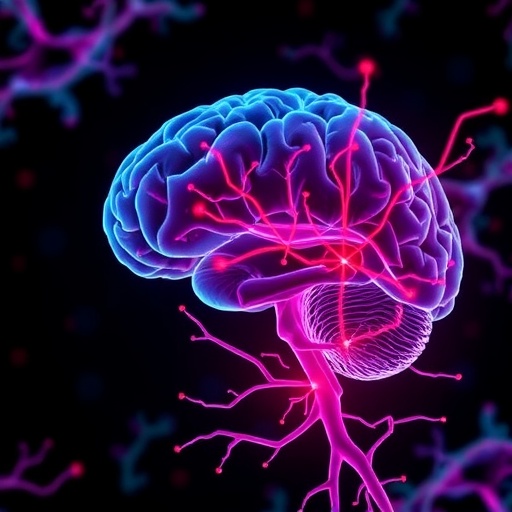Findings highlight the importance of screening kids as young as 10 for suicide risk in emergency settings
A research team found nearly one-third of youth ages 10 to 12 years screened positive for suicide risk in emergency department settings. As part of a larger study on youth suicide risk screening in emergency departments, researchers at the National Institute of Mental Health (NIMH), part of the National Institutes of Health, and collaborators sought to explore how frequently preteen youth ages 10 to 12 screened positive for suicide risk. Notably, 7 percent of the preteens who screened positive for suicide risk were seeking help for physical – not psychiatric – concerns. The study appears online March 11 in Hospital Pediatrics.
“Typically, suicidal thoughts and behaviors are seen in older teens. It was troubling to see that so many preteens screened positive for suicide risk, and we were alarmed to find that many of them had acted on their suicidal thoughts in the past,” said Lisa Horowitz, Ph.D., M.P.H., a clinical scientist in the NIMH Division of Intramural Research Programs (DIRP) and an author on the paper. “This study shows that children as young as 10 who show up in the emergency department may be thinking about suicide, and that screening all preteens — regardless of their presenting symptoms — may save lives. Otherwise, they may pass through our medical systems undetected.”
Suicide is a growing public health problem in the U.S. Between 2008 and 2017, there was a substantial rise in the suicide rate for youth ages 10 to 12 and today suicide is the third leading cause of death for this age group.
Studies have shown that the majority of youth who died by suicide had been seen by a health care provider in the month prior to killing themselves. NIMH has identified hospital emergency departments as a key setting for screening youth for suicide risk given the number of youth who visit the ER every year for mental health concerns and intentional self-harm; however, uncertainty exists about the appropriate age to screen youth.
In this study, researchers examined the extent to which preteens seen in the emergency department screen positive for suicide risk to inform universal youth suicide risk screening efforts. The 79 preteens in the study came from three large, urban pediatric hospitals. They were screened for suicide risk using the four-item Ask Suicide-Screening Questions (ASQ) and the 15-item Suicidal Ideation Questionnaire-JR (SIQ-JR). Just over half (53.2 percent) of the preteens in the study came to the hospital because of a physical health concern (e.g., back injury or chest pain) and nearly half (47 percent) came because of a mental health concern (e.g., depression or panic disorder). Answering “yes” to any of the four ASQ items and/or scoring above the SIQ-JR cutoff score was considered a positive screen for suicide risk. Preteens who screened positive on either the ASQ or SIQ-JR received a brief suicide safety assessment by a mental health professional.
The researchers found that 23 of the 79 (29.1 percent) preteen patients screened positive for suicide risk. More than half (54.1 percent) of the preteens presenting with a psychiatric concern screened positive for suicide risk, and a substantial number (7.1 percent) of the preteens with physical complaints also screened positive for suicide risk. Roughly one in five (17.7 percent) of the preteens, specifically those who visited the emergency department for a psychiatric concern, had previously attempted suicide.
Of the more than 30 million pediatric emergency visits in 2015, nearly 5.4 million involved youth ages 10-14.
“Many families use the emergency department as their sole source of health care, which presents a unique opportunity to identify these younger kids who are struggling with suicidal thoughts,” said Maryland Pao, M.D., clinical director of the NIMH DIRP and an author on the paper. “But most preteens seen in the emergency department show up with medical problems and will not disclose their suicidal thoughts unless they are asked directly.”
###
The researchers have developed guidance on how to implement universal suicide risk screening for youth in medical settings using the ASQ tool, which is available on a section of the NIMH website (http://www.
If you or someone you know needs immediate help, call the National Suicide Prevention Lifeline at 1-800-273-TALK (8255). Learn more about ways you can help someone who might be at risk for self-harm.
Reference:
Lanzillo, E.C., Horowitz, L.M., Wharff, E.A., Sheftall, A.H., Pao, M., & Bridge, J.A. (in press). The importance of screening preteens for suicide risk in the emergency department. Hospital Pediatrics.
About the National Institute of Mental Health (NIMH): The mission of the NIMH is to transform the understanding and treatment of mental illnesses through basic and clinical research, paving the way for prevention, recovery and cure. For more information, visit the NIMH website.
About the National Institutes of Health (NIH): NIH, the nation’s medical research agency, includes 27 Institutes and Centers and is a component of the U.S. Department of Health and Human Services. NIH is the primary federal agency conducting and supporting basic, clinical, and translational medical research, and is investigating the causes, treatments, and cures for both common and rare diseases. For more information about NIH and its programs, visit the NIH website.
Media Contact
Diana Morales
[email protected]




